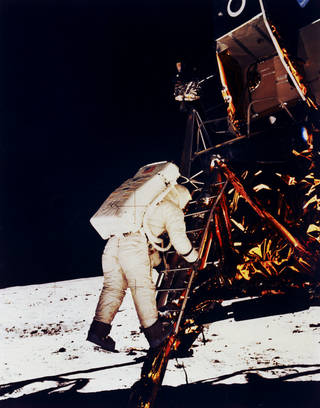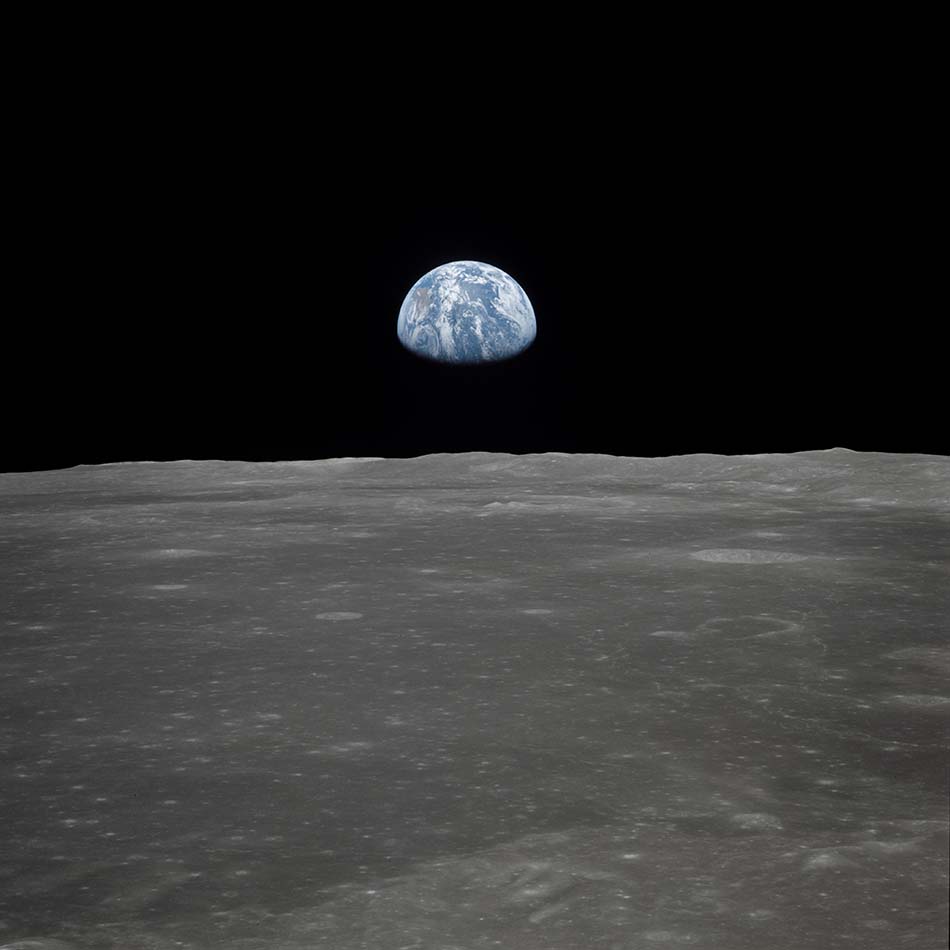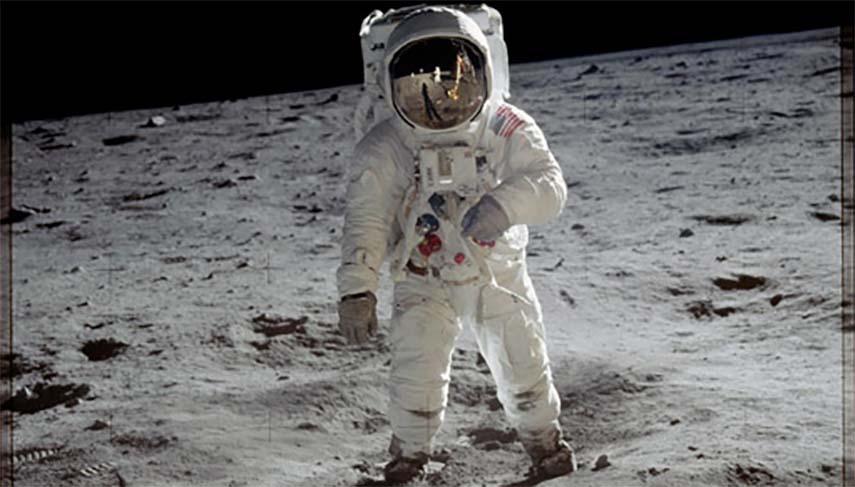Saturday 20 July marks 50 years since humans first walked on the surface of the moon, an achievement that defined the scientific endeavours of the 20th century.
On 20 July 1969, after a landing that included dodging a lunar crater and boulder field just before touchdown, Neil Armstrong and Buzz Aldrin explored the area around their lunar landing site for more than two hours.

One of the first steps taken on the Moon, this is an image of Buzz Aldrin’s bootprint from the Apollo 11 mission.
Image Credit: NASA
They collected soil and rock samples, set up experiments, planted an American flag, and left behind medallions honoring the Apollo 1 crew and a plaque saying: “We came in peace for all mankind.”
The astronauts blasted off from the Kennedy Space Centre on 16 July, beginning a three-day journey to the moon. A day after that, Armstrong and Aldrin climbed into the lunar module Eagle and began their descent to the moon’s surface, with Michael Collins orbiting in the command module Columbia.
When it was time to set Eagle down in the Sea of Tranquility, Armstrong improvised, manually piloting the ship past an area littered with boulders. During the final seconds of descent, Eagle’s computer was sounding alarms.
It turns out to be a simple case of the computer trying to do too many things at once, but as Aldrin will later point out, “unfortunately it came up when we did not want to be trying to solve these particular problems.”
When the lunar module landed at 4:17 pm EDT, with just 30 seconds of fuel remaining, Armstrong radioed “Houston, Tranquility Base here. The Eagle has landed”.

Buzz Aldrin climbs down the Eagle’s ladder to the surface. Click image to enlarge.
Credits: NASA
Armstrong would later confirm that landing was his biggest concern, saying “the unknowns were rampant,” and “there were just a thousand things to worry about”.
At 10:56 pm EDT Armstrong was ready to plant the first human foot on another world. With more than half a billion people watching on television, he climbed down the ladder and proclaimed: “That’s one small step for a man, one giant leap for mankind.”
Shortly thereafter, Aldrin joined him, and offered a simple but powerful description of the lunar surface: “magnificent desolation.”
They explored the surface for two and a half hours, collecting samples and taking photographs.
They left behind an American flag, a patch honoring the fallen Apollo 1 crew, and a plaque on one of Eagle’s legs that reads: “Here men from the planet Earth first set foot upon the moon. July 1969 A.D. We came in peace for all mankind.”
Armstrong and Aldrin blasted off, docking with Collins in Columbia. Collins later said that “for the first time,” he “really felt that we were going to carry this thing off.”
The crew splashed down off Hawaii on 24 July, having achieved the momentous goal of walking on the moon and returning home.
In a post-flight press conference, Armstrong called the flight “a beginning of a new age”, while Collins spoke about future journeys to Mars.
Over the next three and a half years, 10 astronauts followed in their footsteps.
Gene Cernan, commander of the last Apollo mission, left the lunar surface with these words: “We leave as we came and, God willing, as we shall return, with peace, and hope for all mankind.”
Msin picture: Apollo 11 astronaut Buzz Aldrin on the Moon.
Image Credit: NASA

This view of Earth rising over the Moon’s horizon was taken from the Apollo 11 spacecraft.
Image Credit: NASA

